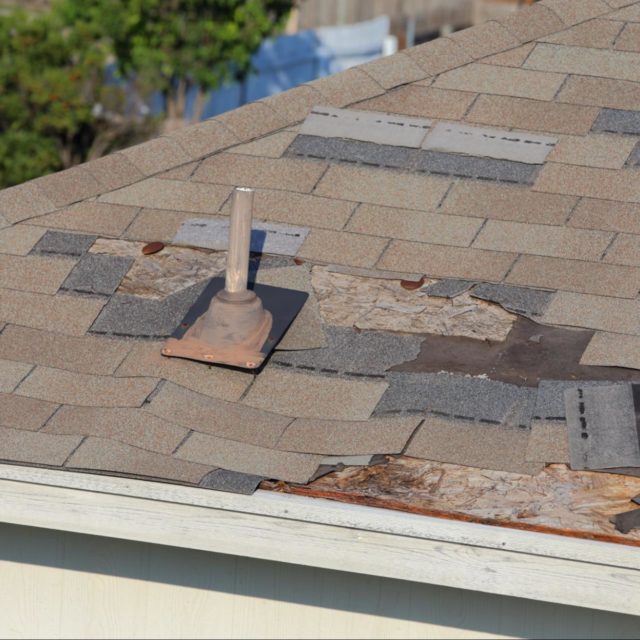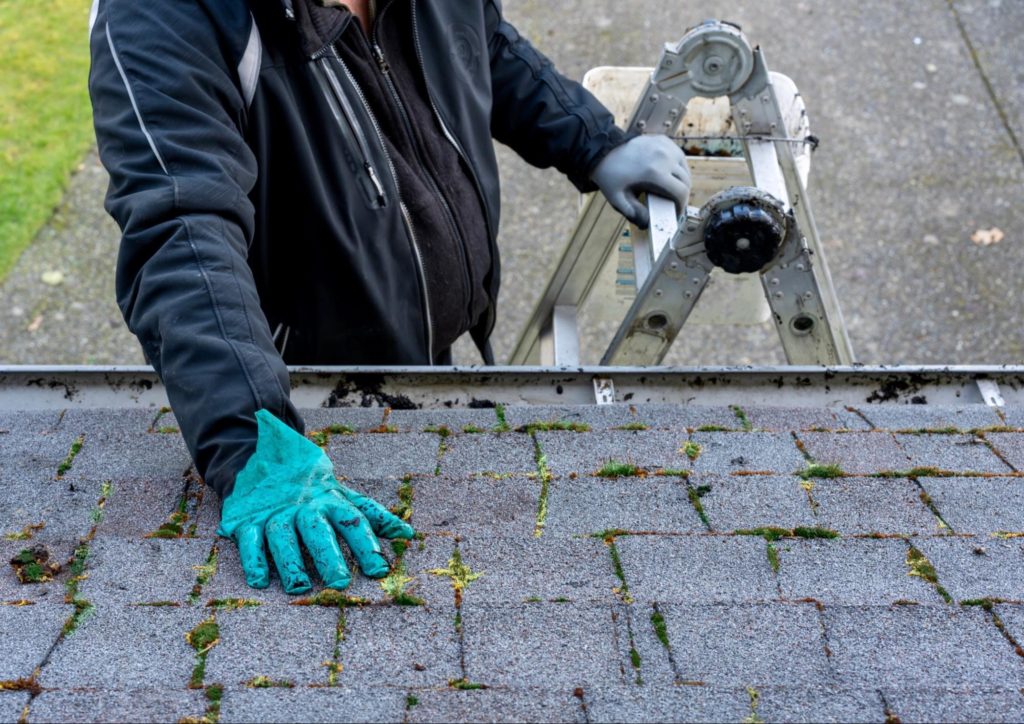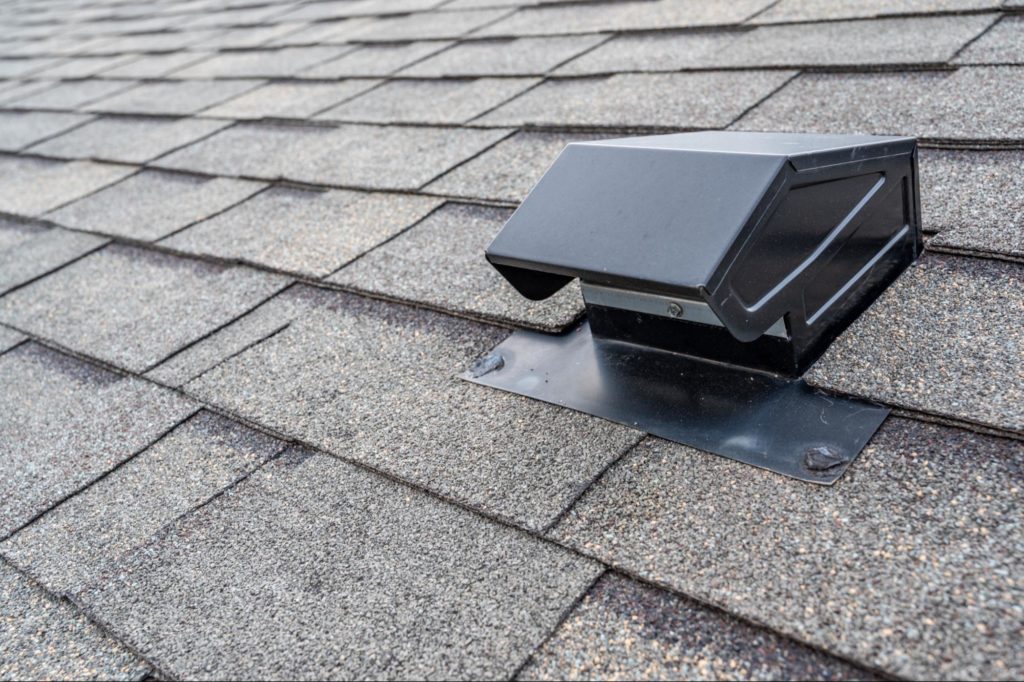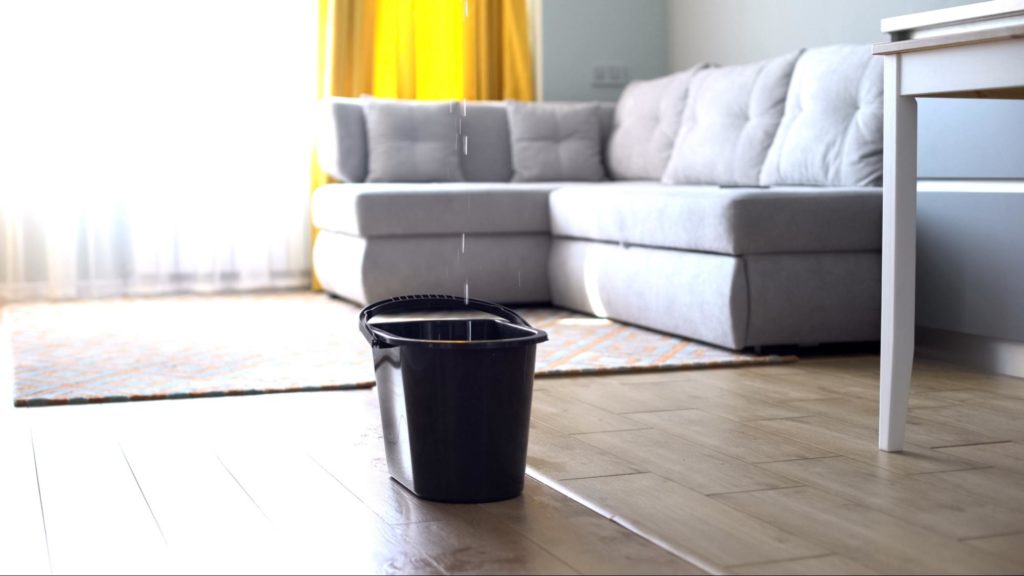How to Create a Roof Storm Damage Checklist

- Written by: jlbmdev

If you’re a homeowner, chances are you’ve encountered your share of rough weather over the years. Even in relatively temperate climates, inclement weather like hailstorms, driving wind and rain, and even tornadoes or hurricanes can cause serious storm damage to your roof.
After an intense storm, it’s a good idea to conduct a quick inspection of your home’s exterior surfaces to check for any damage. This blog will explore how to inspect your roof for storm damage and important next steps, should you find any major damage.
When creating a roof storm damage checklist, it’s important to understand the effects of different types of weather on your property and how to spot the telltale signs of damage that often accompany them. Below is a list of the most common elements that often cause damage to your home’s roof.
Signs of wind damage to a roof can take the form of loose or missing shingles, chimney issues, curling or peeling shingles, granule loss, damaged soffit or fascia, and indoor leaks. How wind speeds interact with a given structure will vary, but you’ll find general rules of thumb below:
While hail the size of tennis balls is rare in much of the United States, hail storms are responsible for property damage to crops and homes every year. In the case of your roof, the impact of a hailstorm can crack shingles and lead to water damage in your home.
After a hailstorm, if you notice dents on your vehicles that are parked outdoors, plants stripped of their leaves, or damage to your home’s siding, you’ll want to inspect your roof for possible damage as well.
The most common sign your roof has sustained water damage may actually come from looking at your home’s ceiling. If you notice leaks, spots on the wall, or wet stains, you’ll want to contact a roofing contractor ASAP. Excess water often makes it into the interior of your home’s structure due to loose or cracked shingles and damaged rafters.
After a heavy snowfall, ice dams are caused by warm air in a home’s attic causing the snow to melt on the roof above it. When this happens, water runs down the roof and refreezes once it reaches the colder end of the roof, forming a mount (or dam) of ice at the edge. At first, ice dams are no more trouble than icicles are hanging off the edge of your roof.
However, during the warmer parts of the winter day, water melting off the roof behind the ice can get blocked up and seep under the shingles and into your home’s exteriors. The best time to stop ice dams is before winter comes. Start by inspecting your roof for damaged shingles (more on that below) and plugged gutters, as they’ll make it easier for water to sneak into your roof.
Shingle manufacturers’ warranties will often require the use of protective equipment called ice and water shields (sometimes called ice and water protectors) during the roof installation process. This is a waterproof membrane developed to protect vulnerable areas on a roof from ice and water damage. Ice and water shields are made with polymer-modified bitumen. Another option is to lay down heat cables to help water flow off your roof instead of under it. Heat cables attach to your roof and melt channels of snow and can help provide a path for snowmelt to drain off your roof instead of pooling behind an ice dam.
Debris – such as falling trees, branches, or even building components like shutters, vents, satellite dishes, and nails from other people’s properties – can cause damage to your roof when blown around by heavy winds.

Did a storm blow shingles off your roof? Are you noticing gutters filled with debris? If you’ve just experienced a rough storm and think your home will benefit from a quick inspection, you’ll find a list of the major items to inspect and how to spot potential damage to them below.
When assessing damage, try using a pair of binoculars instead of climbing on the roof yourself, as this can be very dangerous. As best you can, try to estimate the general square footage of damage and note any specific areas that have been damaged. This will help you communicate the situation to a roofing contractor and your insurance company.
To help you make a roof storm damage inspection checklist, we’ll review the major parts of a home’s roof that often experience damage during severe weather.
Shingles are your home’s first line of defense against heavy wind, rain, and debris. When examining your roof’s shingles for damage, pay close attention to curling or cracking shingles, as well as any missing ones! If you decide to do a preliminary inspection of your roof yourself, be careful not to step on the roof, as the structure may be weak depending on how much damage was inflicted during the storm.
You may be wondering what your roof vents are and where they’re located. Roof vents are systems that allow air to circulate through the attic and extend the life of the roof while regulating indoor temperatures.
After a storm, roof vents may be blocked by debris, have loose vent caps/covers, or suffer from diminished water sealant due to damaged flashing. Chances are, you’ll know if your home has them or not, but here is a picture of a standard roof vent:

After a storm, your gutters may be clogged with leaves, twigs, and other debris. When gutters get backed up, water can get under the shingles and start to leak into the interior of your home. A storm with heavy winds may even cause a gutter to become detached from your roof. Along with clearing your gutters of any post-storm debris, we recommend pressing on and shaking your gutters a bit to see if they feel loose.
Has a rainstorm caused a leak in your roof? If so, you’ll want to head inside and see if any water spots or leakage have formed on your ceiling, as water can become trapped in a house’s siding and make its way into the structure of a home if allowed to persist. If you have an attic, you’ll want to pay careful attention, as this is one of the first places water damage will typically form.
If your home’s roof has been seriously damaged by a storm, you should contact a roofing contractor ASAP. You should also inform your insurance company, as they’ll likely send out an adjuster to survey the damage and provide a roofing insurance claim for any storm damage your home has suffered.
If you’re not able to get a contractor or adjuster out to assess your roof’s storm damage immediately, here are some ways you can temporarily repair a storm damaged roof and help mitigate further damage in the meantime:

When possible, we recommend having an experienced roofing contractor and adjuster assess the roof storm damage together to determine the cost of a roof repair to fix storm damage. If a major storm has recently rolled through your area, some insurance companies may bring in out-of-state adjusters due to the influx in property assessments.
While this is not done with ill-intent, these professionals may not be aware of zoning rules and local building codes specific to your state or county. A roofing contractor familiar with your area can help guide the process to ensure the roof is repaired and replaced to code.
Excessive damage to a roof isn’t something to repair by yourself, as it can prove extremely dangerous, especially in unsafe conditions. Working with a roofing contractor experienced in working with homeowners and storm damage is essential. A trusted contractor has the knowledge, tools, and safety equipment needed to accurately assess storm damage to your roof and repair it as needed.